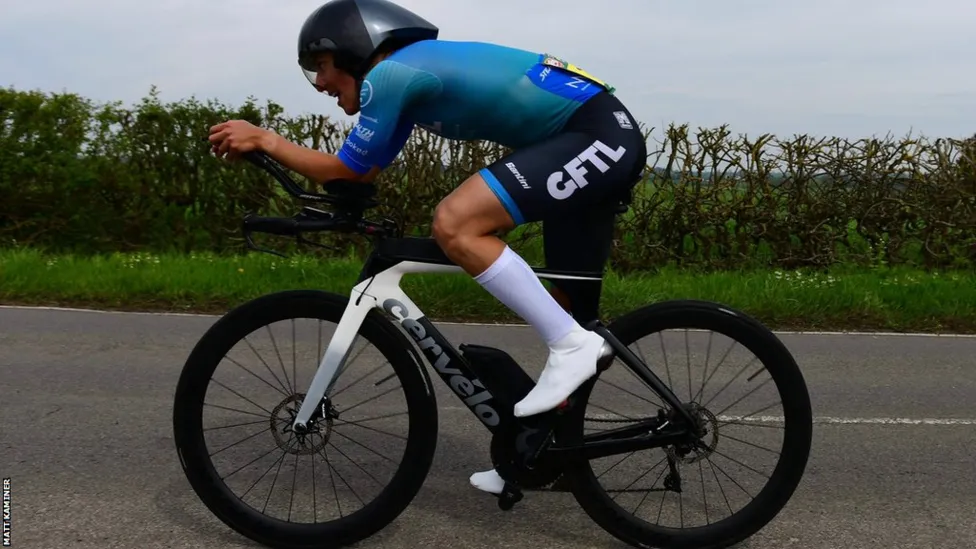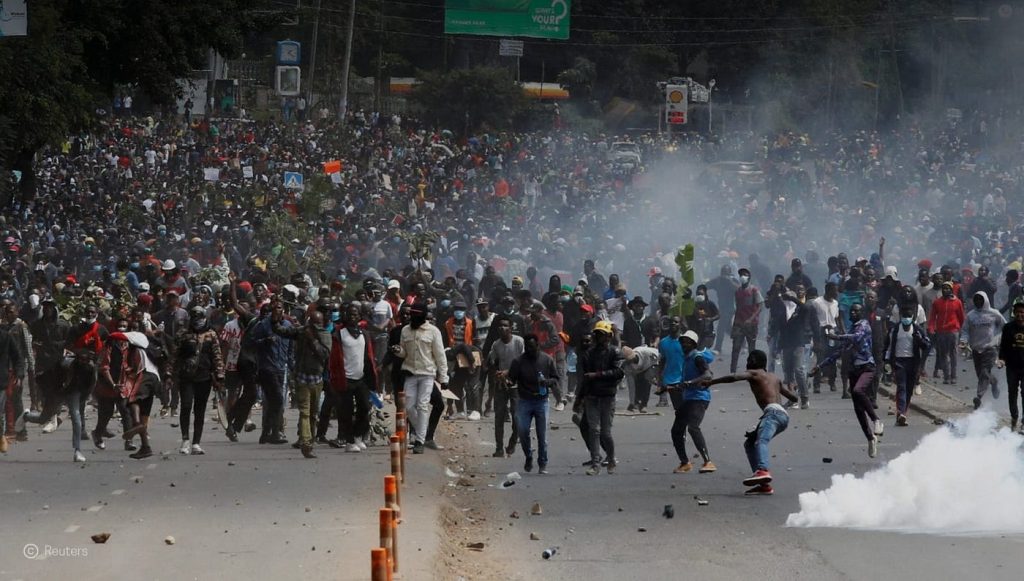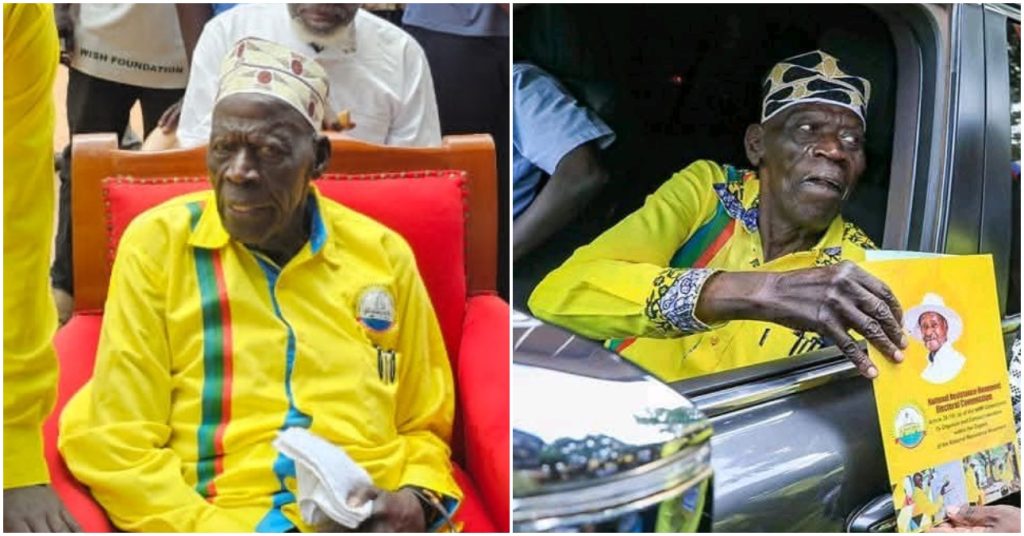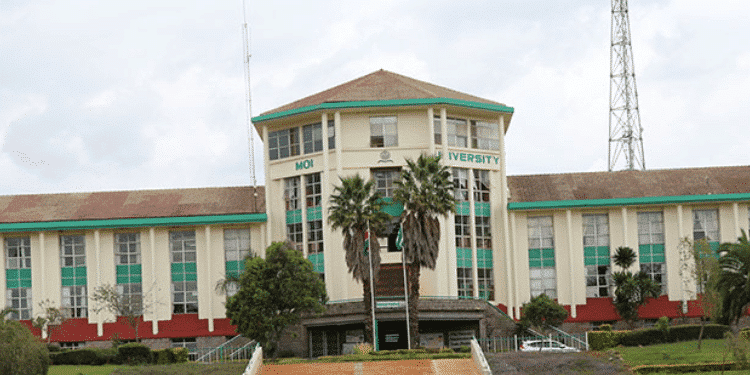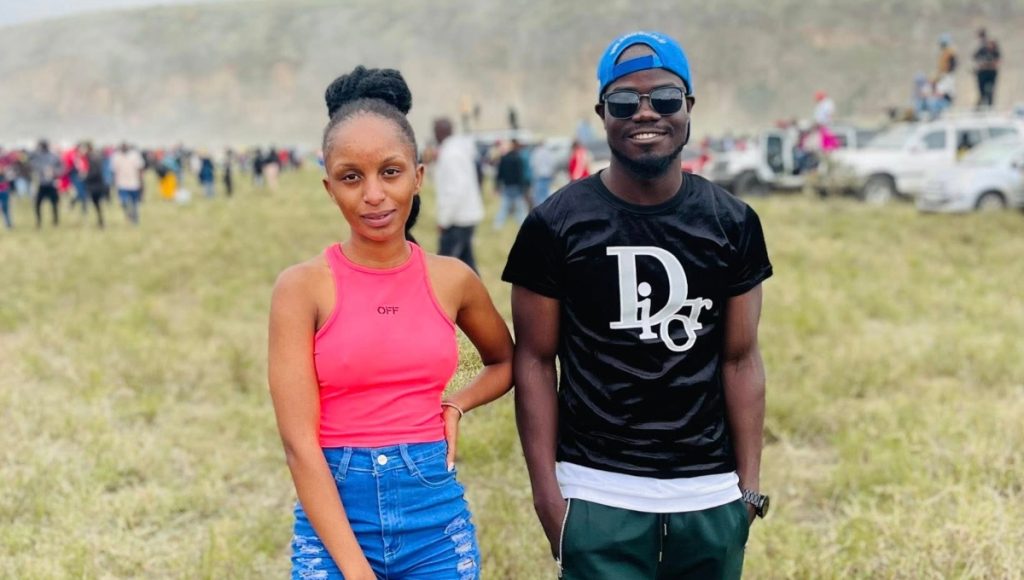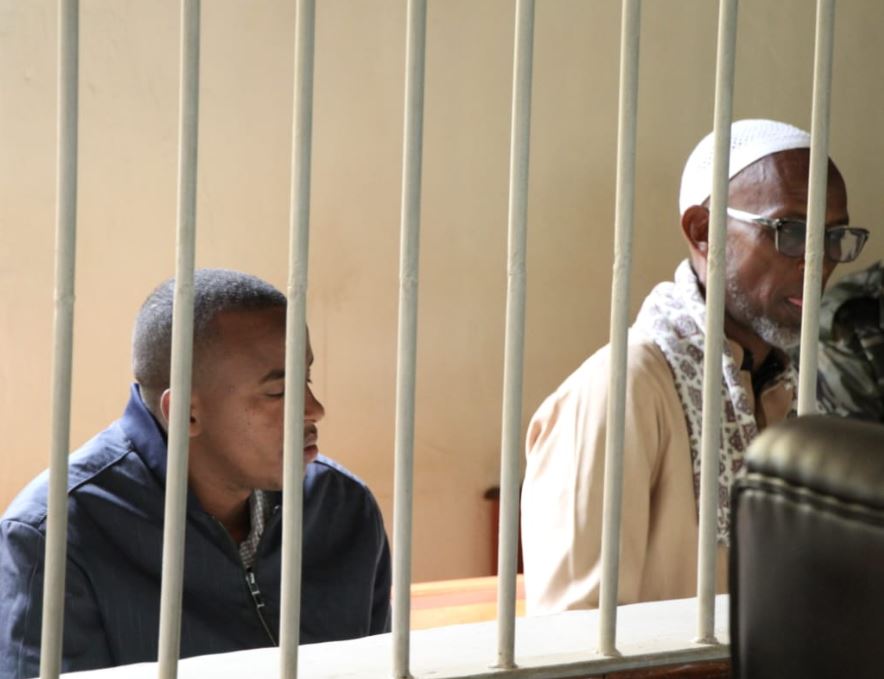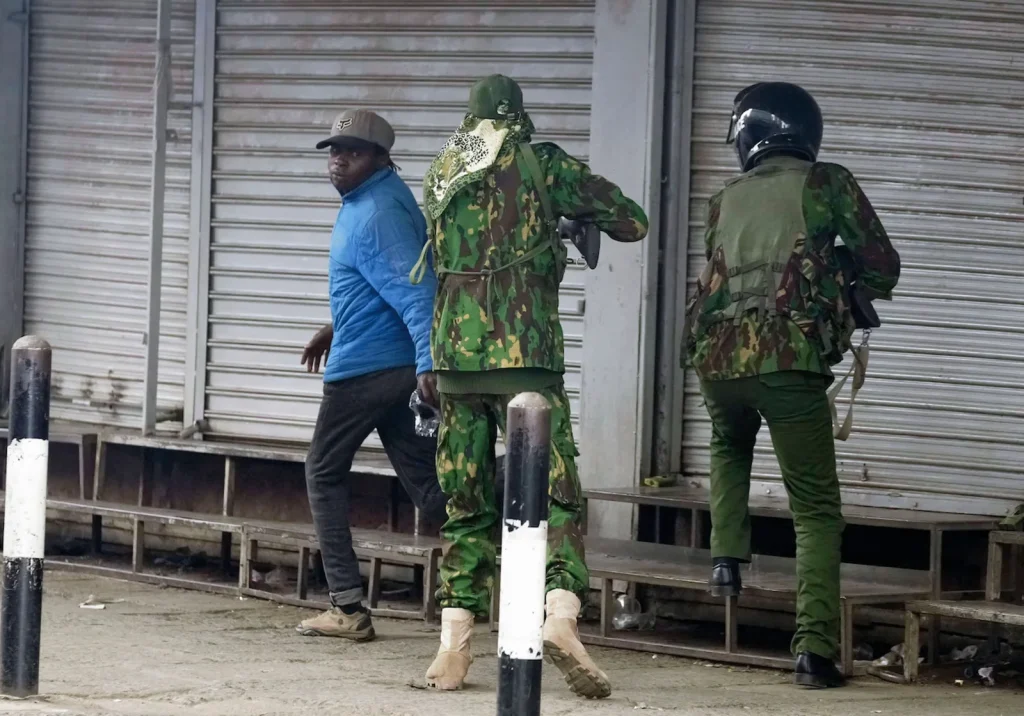Members of Kenya’s security forces who shot dead anti-tax protesters at parliament last June have been identified. More than 5,000 images were analyzed to find that the protesters were unarmed and posed no threat when they were killed. No- one was convicted despite public outrage and a parliamentary order for an investigation.
Using videos, photos and camera metadata, the BBC’s Africa Eye team was able to build a detailed timeline. Focusing on three killings, they plotted the fatal shots back to a police officer and a soldier on a 3D model of parliament.
Thousands of Kenyan Gen Z gathered in Nairobi on 25 June 2024 for the third mass demonstration against the government’s Finance Bill. Lawmakers had been forced earlier to drop tax hikes on bread, cooking oil, and mobile money.

MPs entered parliament to cast their final vote on the controversial bill and crowds swamped Parliament Road.
“For the first time it was the Kenyan people – the working class and the middle class and the lower class – against the ruling class,” Activist Boniface Mwangi said.
The united protestors were hit with rubber bullets, tear gas and water cannons. The streets were filled with over 100,000 people by 1: 00 PM.
Protesters broke through police barricades and stormed the grounds of parliament at 14:14, when voting concluded with the bill passing 195 to 106.
“The numbers start getting bigger and people actually start getting arrested, the police are everywhere. They’re trying to push people back. People are even climbing on top of those water cannons.” Allan stated.
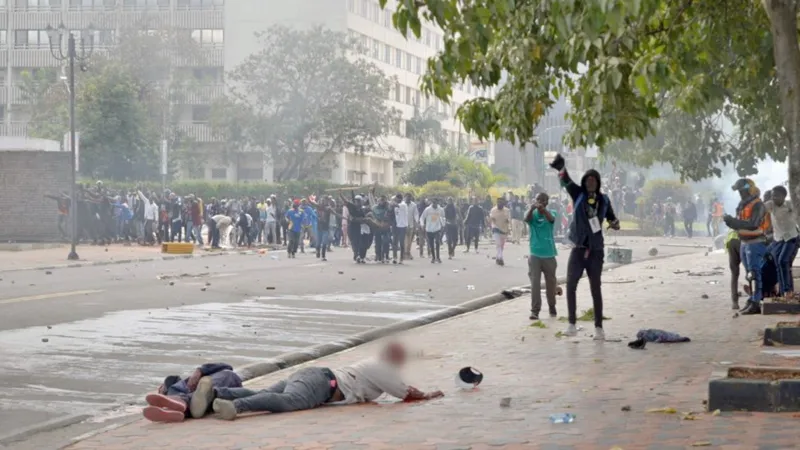
While this was happening, journalists were filming, producing minute-by-minute footage from many angles.
One of those videos captured a plain-clothes police officer shouting “uaa!”, the Swahili word for “kill”. Seconds later, a police officer knelt, gunshots were heard and protesters in the crowd collapsed – seven in total.
Even after the fatal shots, the plain-clothes officer could still be heard urging his colleagues forward to “kill”. He was not so cautious about concealing his identity: his name is John Kaboi.
Multiple sources said that he is based at the Central Nairobi Police Station.
David Chege, a 39-year-old software engineer and Sunday-school teacher, and Ericsson Mutisya, a 25-year-old butcher, were shot dead. Five other men were wounded, one of whom was left paralyzed.
Allegations were made to Kenya’s Police Service, which said the force could not investigate itself, adding that the IPOA was responsible for investigating alleged misconduct.
John Kaboi was approached for comment and did not reply.
The shootings, instead of deterring the protesters, only strengthened their resolve. Demos broke through again at 14:57 and entered parliament grounds, with demonstrators waving flags and many with their hands up.
More gunfire erupted as they retreated. On the ground, three bodies were seen. A 27-year-old finance student was shot to death in the head from behind as he was leaving.
Faith Odhiambo, president of the Law Society of Kenya, said that the aim was to ‘kill those protesters.’ “They could have arrested him. There is no doubt shooting him in the head shows intent.”
The Kenya National Commission on Human Rights said at the end of the day it had 39 deaths and 361 injuries nationwide. President William Ruto thanked security forces for defending the country from ‘organized criminals’ that evening. But after fierce public pressure, he said he would ditch the Finance Bill.
“Listening keenly to the people of Kenya, who have said loudly that they want nothing to do with this Finance Bill 2024, I concede,” the president said in a national televised address, adding he would not sign it into law.
But to this day no security officer has been held to account for the deaths and no official investigation has been published.


